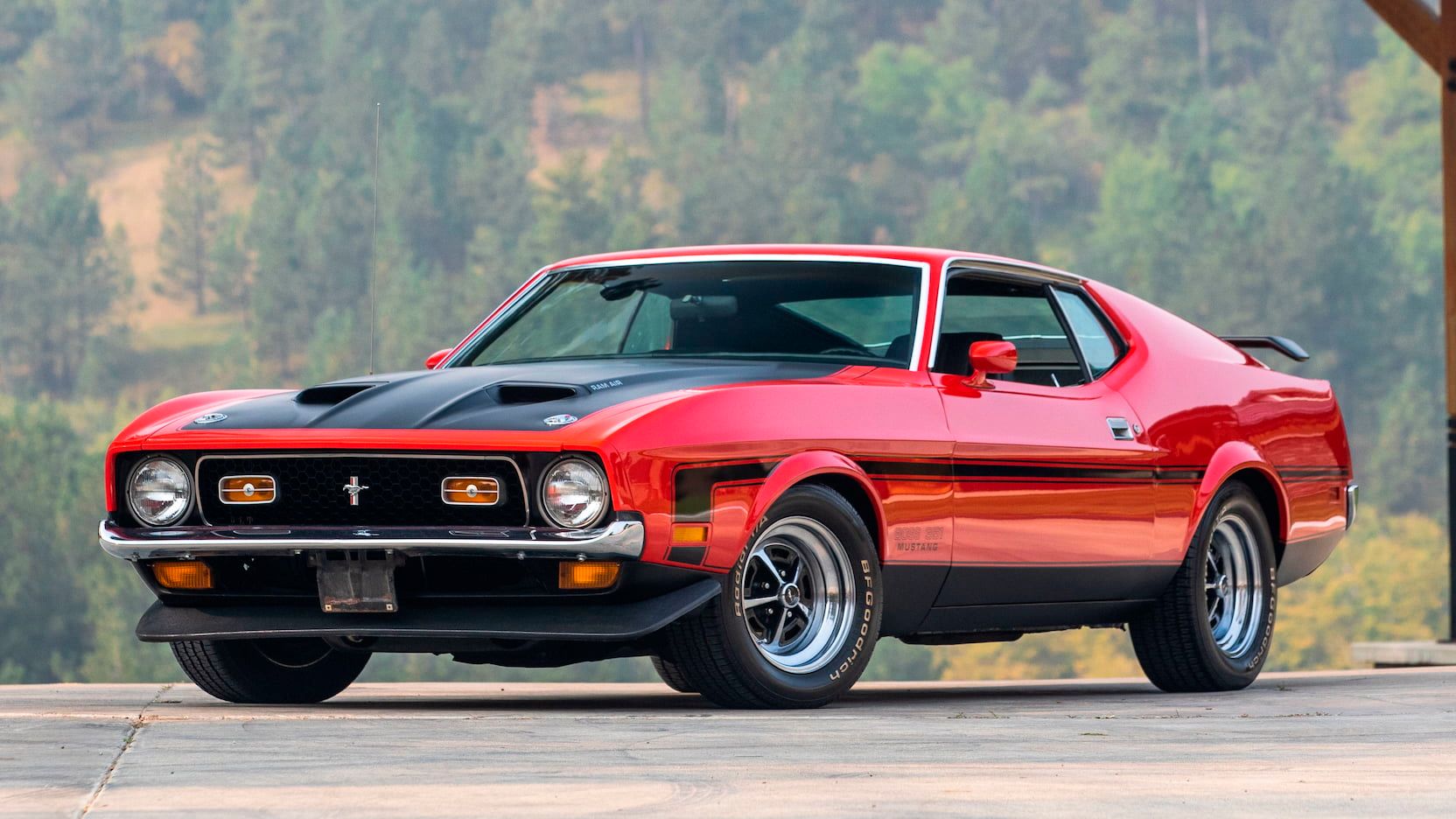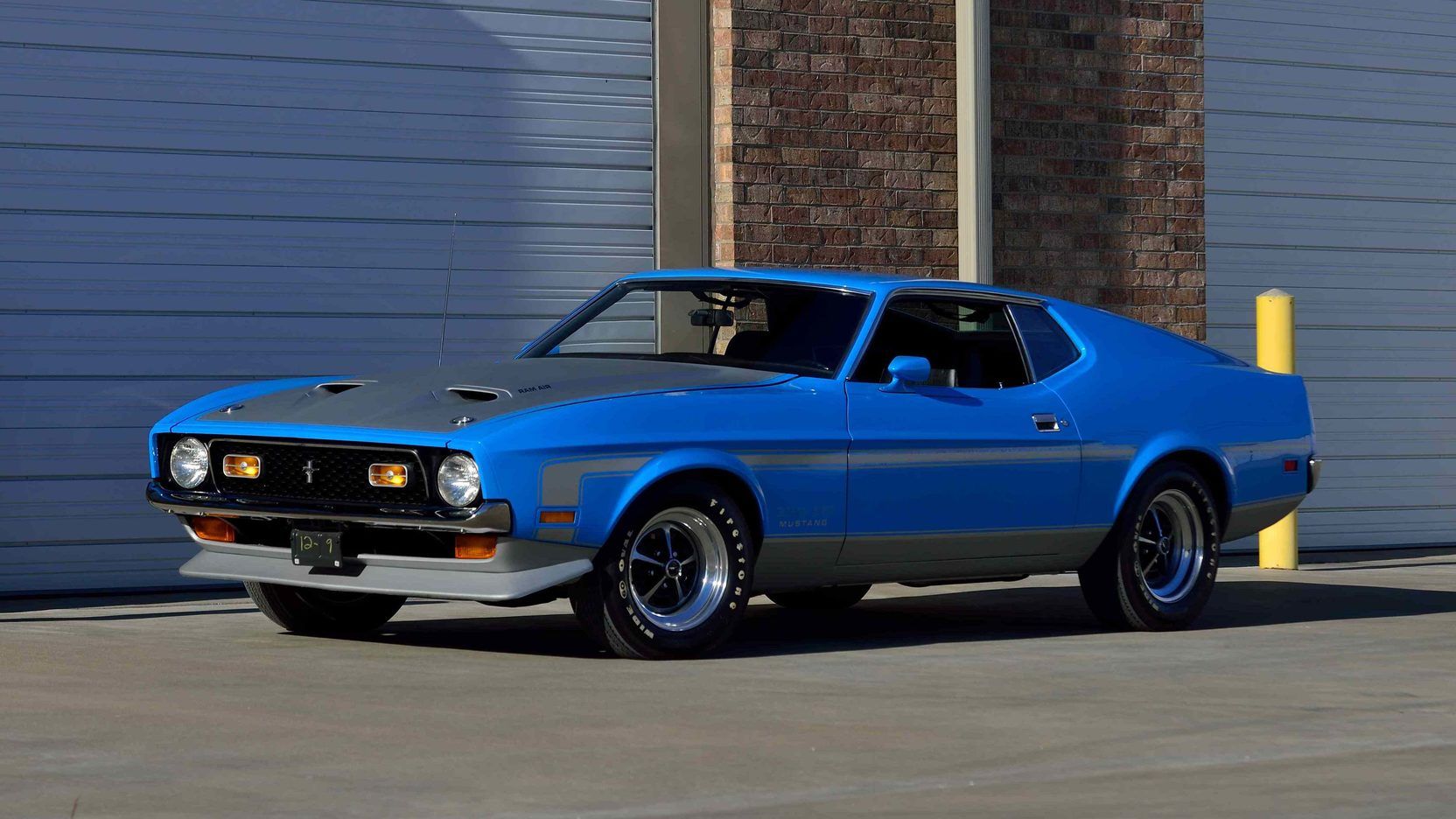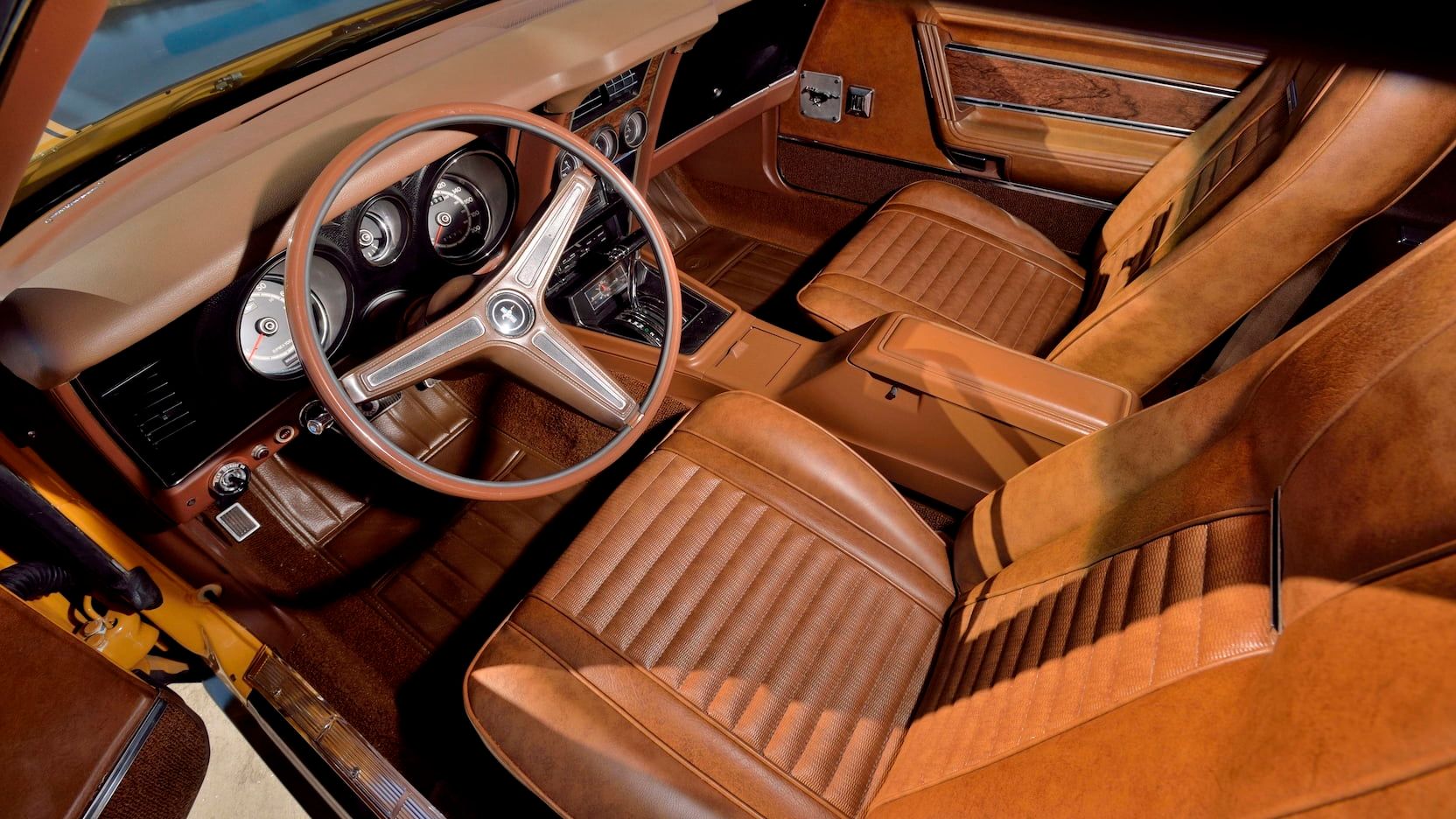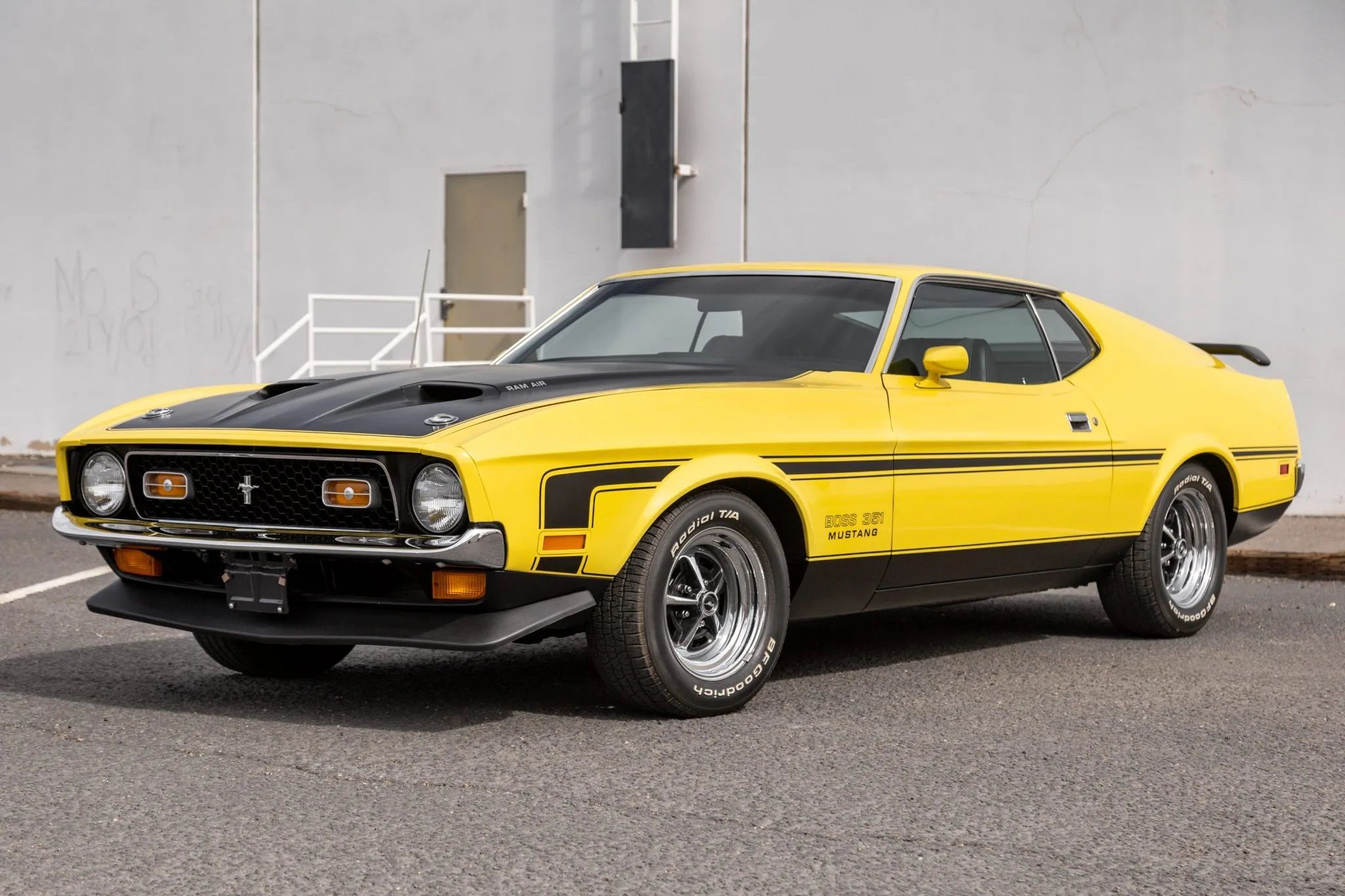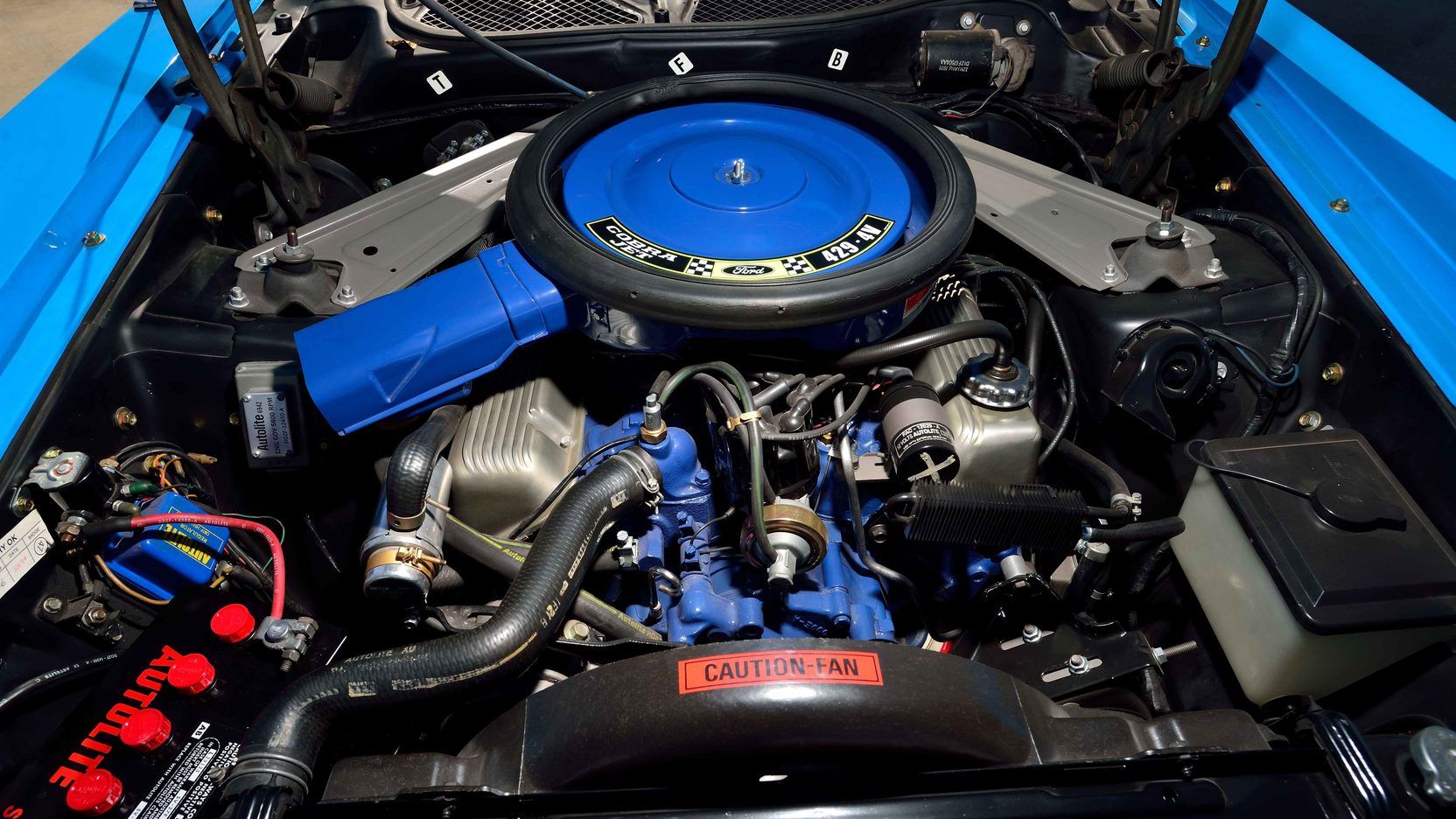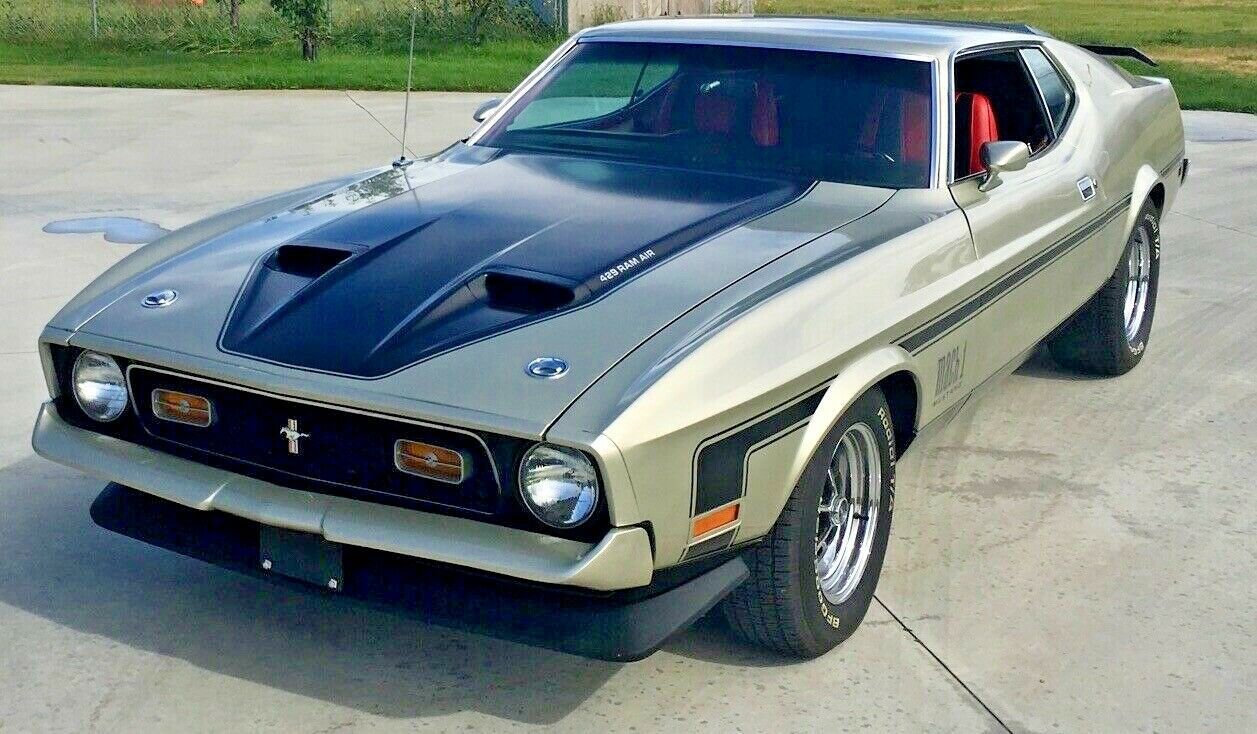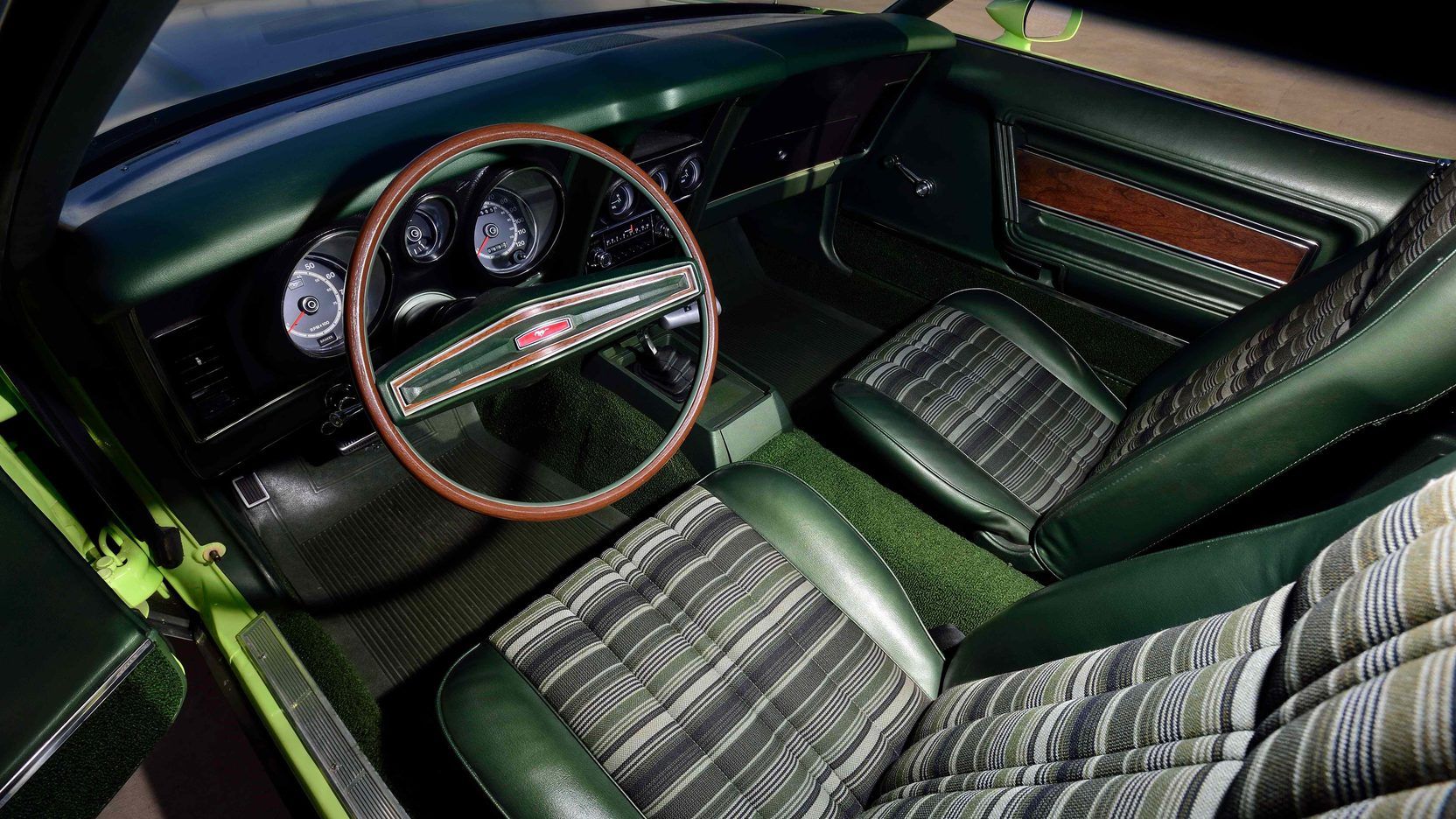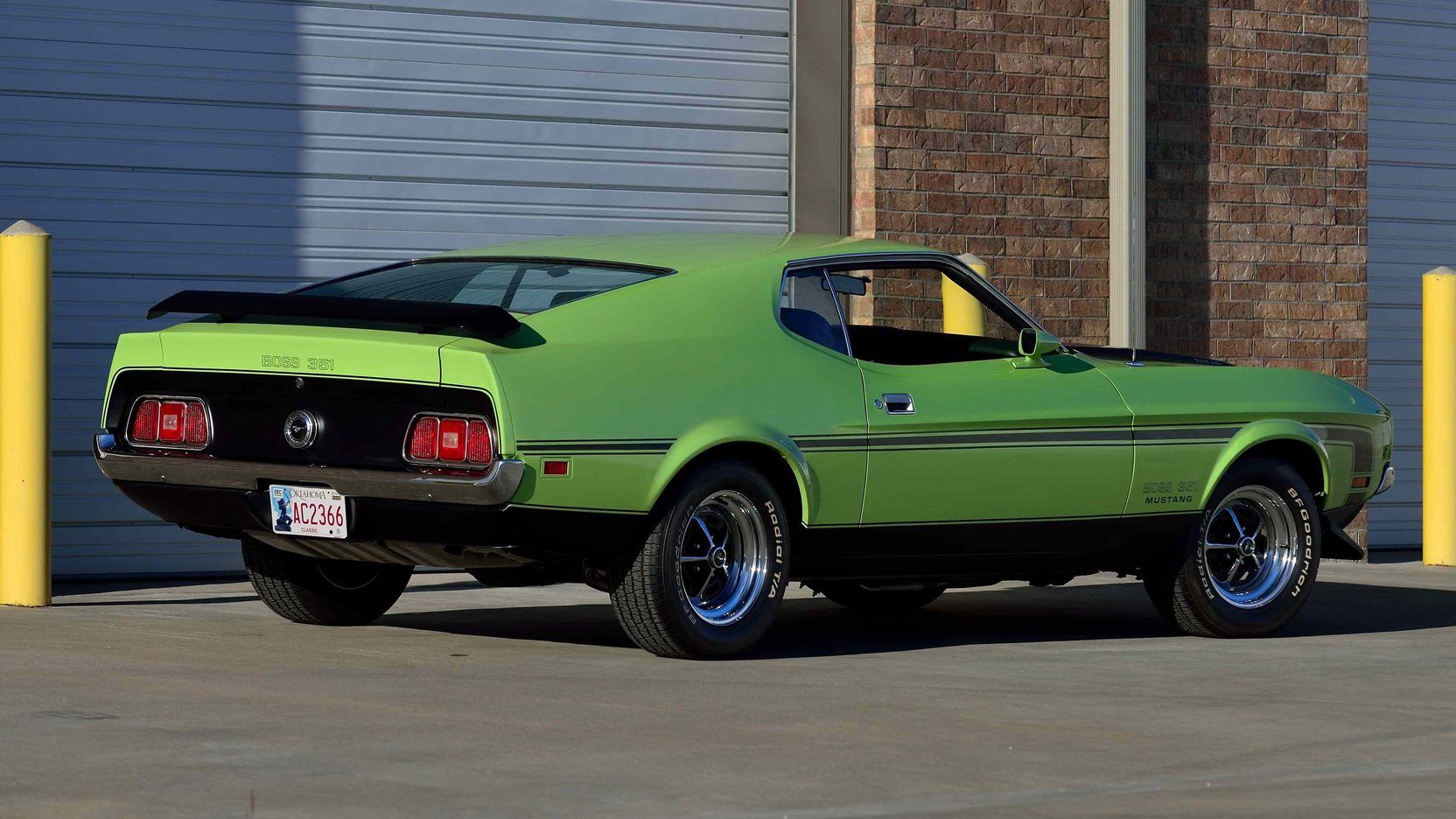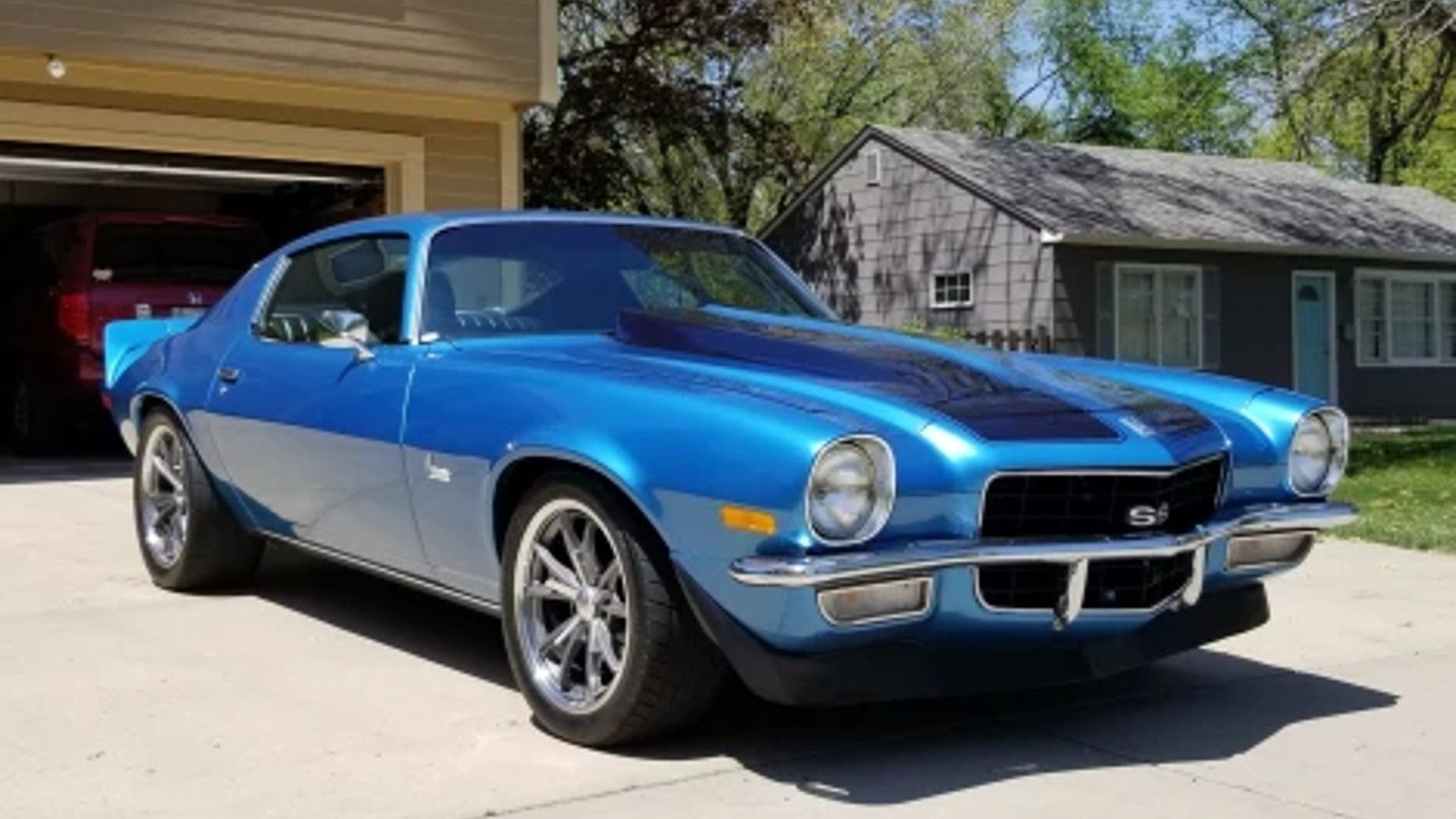Looking to build off the huge success of the original Mustang, Ford looked to drum up interest in the pony car by making huge changes for 1971. Introduced in late 1970, the '71 car saw huge styling changes and represented the last such change for the first generation. These changes made the cars more Muscle and less Pony car as the Mustang got bigger and heavier.
But there was a reason Ford sent the Mustang to the gym. There was a huge new power plant that would be available, and the engineers were tasked with making room for the powerful new engine. It was a move that had executives on edge and wondering if the follow-up to one of the most successful cars of all time would go over well with consumers.
1971 Ford Mustang
- Complete redesign
- Powerful engines
- Improved handling
- Model: 1971 Mustang
- Engine:: 4.1 liter V-6 - 7.0 liter V-8
- Power Output: 120 - 375 HP
- Torque: 190 - 450 LB-FT
- Transmission: 3-speed manual/4-speed manual/3-speed auto
- Driveline: Rear-wheel drive
- Several engine options
- Muscular appearance
- Multiple trims
- Polarizing design
- Tight interior space
- Rough ride
1971 Ford Mustang Performance and Capability
Known as the "Big Horse" Mustangs, the 1971–73 cars were available in six trims:
- Hardtop
- Hardtop Grande
- Fastback
- Fastback Boss 351
- Fastback Mach 1
- Convertible
This included a possible seven engine options ranging from a base engine inline-six created to the powerful 429 Cobra Jet. The base car came equipped with the inline six that created 120 horsepower and 190 pound-feet of torque. Mach 1 came standard with the 302-cubic inch V-8 that cranked out 210 horsepower and 296 pound-feet of torque. It could be optioned out with the powerful 429 cubic inches Cobra Jet V-8 that churned out 370 horsepower and 450 pound-feet of torque.
To squeeze that engine under the hood, Ford included a cross-flow radiator and reshaped spring towers to allow for the extra cubic inches. Meanwhile, the Boss 351 came standard with a 351 cubic inch V-8 that sent 330 horsepower to rear wheels along with 370 pound-feet of torque. Transmissions included two manuals, a three-speed or four-speed and a three-speed automatic.
Mach 1 equipped with the 429 Cobra Jet was quickest to 60 mph, reaching it in just 5.8 seconds. A quarter mile would be impressive for today with the big block propelling the new heavier Mustang down the stretch in just 13.8 seconds at just over 100mph. Fuel mileage was not great by today’s standards but decent for the day. Mustang equipped with less power 351 “Cleveland” saw a combined 13.8mpg.
Changes to the Mustang weren’t just contained to the body and the power plants. The suspension was improved from the previous car. With the larger car came a wider track which helped the car stay more planted. It could also be optioned with the stiffer “competition chassis” along with the “Drag pack” rear end. The new suspension geometry led to significant changes to the Mustang front end so, Ford decided to borrow from the Fairlane and Torino.
Model | Base/Mach 1/Boss 351 |
Engine | 250ci inline 6 - 429ci V8 |
Horsepower | 120 - 375 HP |
Torque | 190 - 450 LB-FT |
Transmission | 3-speed manual/4-speed manual/3-speed automatic |
Driveline | Rear-wheel drive |
Exterior Design
Ford took chances with the changes made to the 1971 Mustang’s design. Available in Coupe, Convertible, and Fastback, planning for the car started four years earlier with the final concept being agreed upon in 1968. The overall appearance harkened back to that of the Ford’s Le Mans-winning GT-40s. Once it was revealed, the Mustang was larger – in both size and mass.
It was six inches longer going from 181.6 inches to 187.4 inches. It also got heavier, going from a base weight of 2,449 pounds to 2,721 pounds. The wheelbase was increased from 108 to 109 inches while the aforementioned track was increased by width was increased by 2.4 inches. Despite the increases in size, Mustang wasn’t as big as people remember as it was similar in size to Camaro and smaller than the Challenger and Javelin.
Mustang’s grille now stretched the width of the car. The famous Mustang corral was brought back. The long hood, wide hips, and lines that seemed to go on forever made the car look and feel bigger than it was. Other design exterior design cues were chrome strips on the front of the fenders, borrowed from the legendary 1969 Shelbys.
Designers followed industry trends of the day by adding semi-hidden wipers and flush door handles. From the rear, a concave tail panel housed trapezoidal three-segment taillights. Cars optioned with the 429 “Ram Air” package got functional hood scoops. Cars equipped with the 351 engines could add the Ram Air hood package. This option added two functional hood scoops, twist-type hood locks, and two-toned paint.
The new design was bold and was met was mixed reviews. While describing the fastback, some lauded it for its “aerodynamically clean lines” while one publication said it looked like a “bread van” paired with a Mustang’s front half. Other models were less controversial and went over better with the press.
Wheelbase | 109.0 inches |
Length | 189.5 inches |
Width | 74.1 inches |
Height | 50.1 inches |
Curb Weight | 2995-3280lbs |
Interior Quality And Technology
For all the initial confusion that the exterior of the car created, some were left dumbfounded by the car’s interior. With Mustang’s exterior growing as much as it did, its cabin is actually smaller. The one thing everyone agreed on was the car’s interior felt cramped and claustrophobic. This was a far cry from the spacious and airy feel of the previous car. Outward visibility was an issue due to the low seating position. This made it difficult to see past the long hood and the decision to remove the rear window slats made it hard to see out of the rear.
Despite the tight space and obstructed views, Mustang’s interior fit, and finish were superior to other cars in the segment. The seats were comfortable and supportive. Rear seats provide only enough space for a small child. The redesigned instrument cluster has large, easy-to-read gauges. AC and radio controls are easy to reach although the gear shifter may get in the way in manual transmission cars depending on the gear.
Storage space is adequate with a generous glove compartment and trunk space for a pony car. 1971 was also the first year that you could option a Mustang with power windows and an optional rear window defroster. Other options included leather seats and an eight-track player.
1971 Ford Mustang Price And Availability
The base price for the basic coupe and fastback were identical at $3,006. Those who opted for the open-air feel of the convertible would be a little more than the base price as it jumped just over $300 to $3,322. Stepping up to the Mach 1 was less than $50 more than the convertible at $3,268 while the top-performing model available in the Boss 351 would set you back $4,124. Sadly, the Boss 302 and Boss 429 were no longer available.
Not as many Mustangs were produced in 1971 as there were in the previous years. Ford reported declining sales for the fifth year in a row. This was one of the contributing factors to the drastic redesign for this particular model year. In total, 149,678 Mustangs in total were produced in 1971, representing a 36% decrease from the previous year.
Those in the market for a Mustang '71 today will find it a little more difficult to find one in decent condition because of the year and the lower production numbers. As with shopping for any classic, here are some top Mustang problems you want to watch out for. 1971 did represent the sweet spot as these cars weren’t as highly sought after as the 1970s and under, and they came along before the federal government’s emissions crackdown which saw horsepower numbers get cut nearly in half.
Model | Base MSRP |
Hardtop | $2,911 |
Hardtop Grande | $3,117 |
Fastback | $2,973 |
Fastback Mach 1 | $3,268 |
Fastback Boss 351 | $4,124 |
Convertible | $3,227 |
Main Competition
There should be no questions as to who Ford’s main competitor in this segment was. While there are other impressive options such as Dodge’s Challenger, Oldsmobile’s 442, and Plymouth’s Road Runner, make no mistake, Chevrolet’s Camaro was Mustang’s top competition. The base Camaro was a little less expensive with the entry-level car starting out at $2,758. The Camaro V-6 started out with a little more power giving customers 140 horsepower versus the Mustang’s 120 horsepower.
Where the Mustang pulls ahead is when you start to go up the engine options. Camaro’s most powerful engine option for this year was the Z28’s 350-cubic inch that produced 330 horsepower and 360 pound-feet of torque. Compare that with Mustang’s 429-cubic inch Cobra Jet that produced 375 horsepower and 450 pound-feet of torque. While that was one of the most powerful engines available during that year, they are also the rarest to find now. But with nearly 50,000 more Mustangs produced that year than Camaro, you will have more luck finding a survivor in decent shape.
FAQ
Q: How much is a 1971 Mustang worth?
A base Mustang with the 302ci V8 according to Haggerty has a base price of around $14,000.00
Q: How much is a 71 Boss Mustang?
Average price for a good condition Boss 351 Mustang is $75,000.00.
Q: How fast is a 1971 Ford Mustang?
A Boss 351 Mustang with the 351ci engine has a top speed of 123mph.
Q: How much HP does a 1971 Mustang have
Horsepower ranged from 120hp to 375hp.
Q: What engine does a 1971 Mustang have?
The 1971 Mustang is available with seven different engine options.

